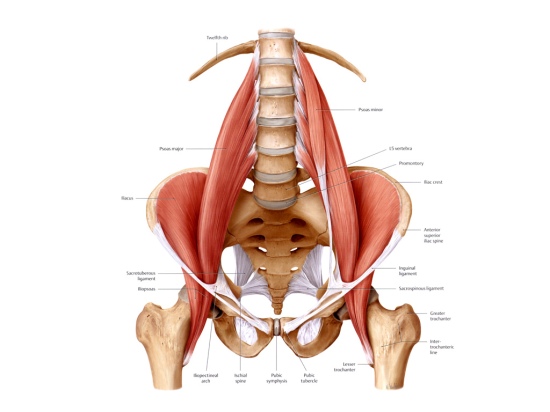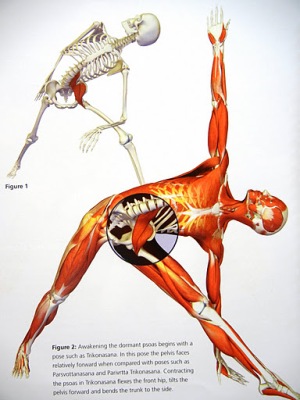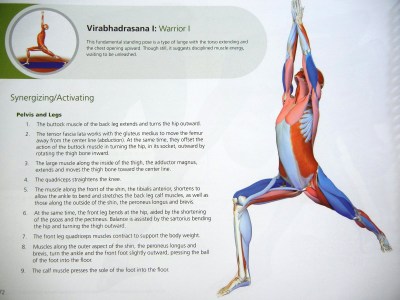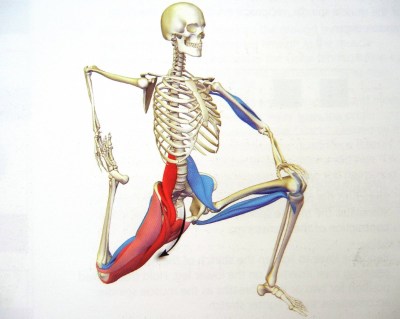The Proper Care and Feeding of your Psoas
The Proper Care and Feeding of your Psoas
Low back pain is one of the main body complaints from people of all ages, occupations, and sport disciplines. An unfamiliar muscle called the Psoas (pronounced soh-as) often contributes to back pain when it is tight, shortened, or unbalanced.
Where, and What is My Psoas?
The Psoas is one of the largest and thickest muscles in the body. It attaches to the vertebrae of your lower back, and the head of your femur (thigh bone). There is a Psoas Major and Psoas Minor that blend into the Iliacus muscle, all of which are generally referred to as the Psoas.
The Psoas is primarily responsible for hip and thigh flexion and has a lot of influence over your lumbar posture and the way your pelvis is positioned.
 |
The Psoas is shortened when you are seated and will become tight & contracted when seated for a prolonged period of time. For those of you who have desk jobs or are students, your day consists mainly of sitting. Eventually, the Psoas will start to think this is its normal position and length.
Incorrect posture during sitting, standing, and walking will cause the Psoas to develop an imbalance that will leave it tighter and harder to release and/or lengthen.
Why Does It Cause Back Pain?
A tight Psoas is a killer for your back for various reasons.
• If it is tight and in a contracted state, your Psoas will want to bring your lower back forward, moving you into an anterior tilt or lordotic posture.
• The tension exerted by the Psoas when in a contracted state may compress the joints and discs of the lumbar vertebrae. This pressure may cause degeneration and increase susceptibility to injury.
• An imbalanced Psoas, where it is shortened on one side, will pull the spine and/or pelvis out of alignment, leading to many painful problems, including scoliosis.
• A tight Psoas may inhibit your Gluteal muscles from firing and activating normally due to Reciprocal Inhibition as the Psoas and portions of the Gluteal muscles function as opposing muscles.
• Imbalances often lead to overcompensation of other muscles of the body, leaving them tight and overworked.
Proper Care of your Psoas.
There are several ways to stop your Psoas from thinking that shorter is natural. These are easy to implement, especially if you don’t suffer from back pain yet.
• Postural Corrections. If we stay in a certain position all day, our tissues will want to move into that resting position, in this case, your Psoas. Surf the web in a standing position, or read a book laying on your stomach.
• Stand up when exercising. When seated all day at work your Psoas is shortened. Make an effort to do the opposite in the gym. Instead of the bike, get on the treadmill. Instead of the rowing machine, get on the step mill.
• Vary your sleeping habits. When you are on your stomach, your back goes into lordosis. If you always sleep on one side, it creates an imbalance. Change it up when you can.
• Move More. Not staying in a seated position all day will go a long way to stopping you from developing a shortened & tight Psoas. Get up more frequently, stretch more often, change positions… just keep moving!
 |
| Begin with a gentle activation of the Psoas with Triangle Pose |
 |
| Warrior 1 is an active stretch for the Psoas and opposing muscles strengthen to stabalize the pelvis |
 |
| Kneeling Quadriceps Stretch is an intense stretch and should NOT be forced. Ease into it! |
The safest and most effective way to release and lengthen your Psoas is through a qualified massage therapist (hmmm, I wonder where to find one…*wink*).
Once you experience bodywork and release of your psoas muscle it’s possible to self palpate it. Ask your therapist to guide you through it while they supervise. This is a great defense against all the hours of sitting because not many people can afford to see their massage therapist on a daily basis.
Activating your gluteals and abdominals will help inhibit and relax your Psoas. Here is a video that shows a few exercises to begin with: